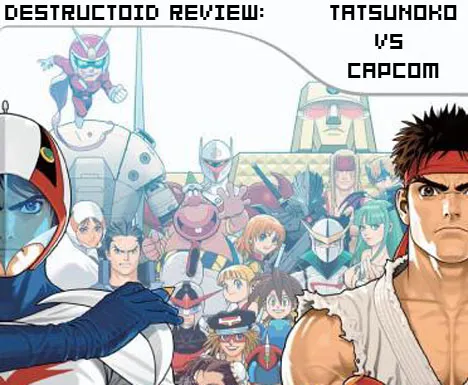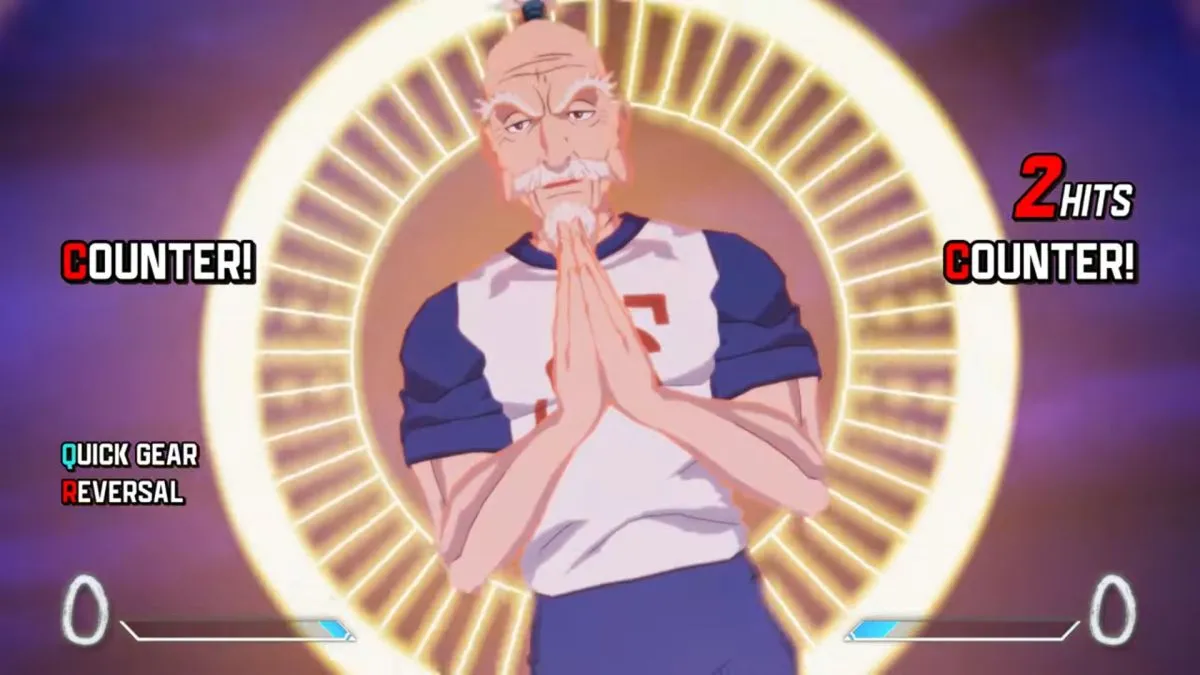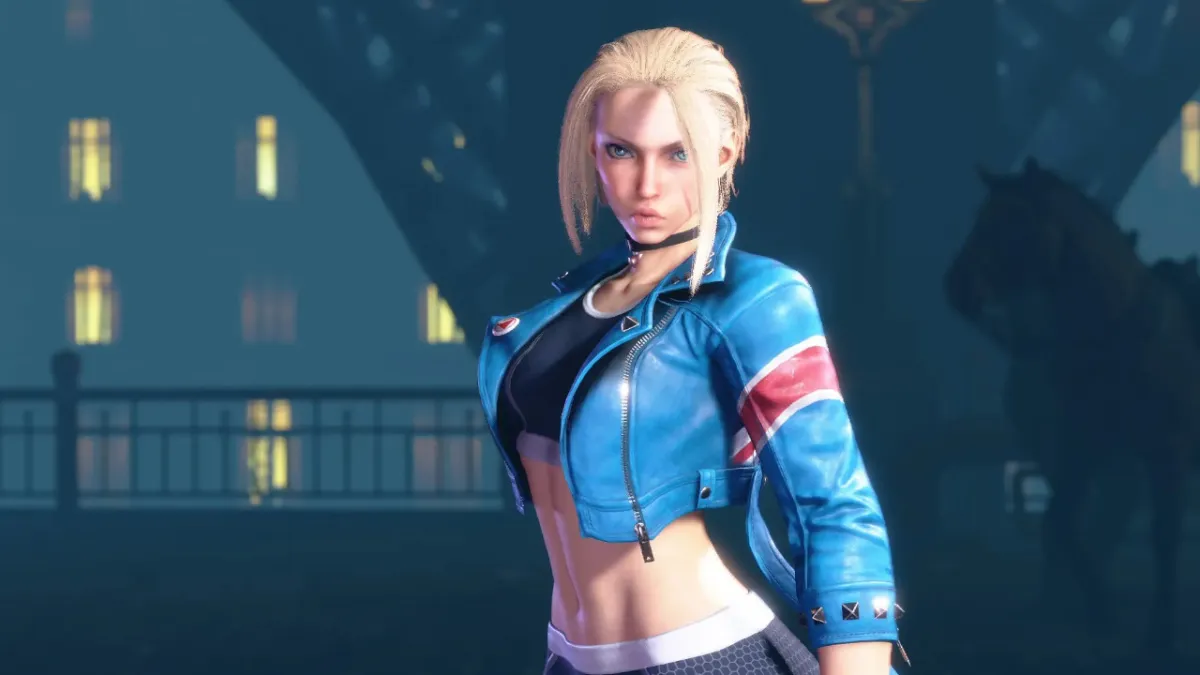It’s been about eight years since Capcom has released a new game in their patented “Superhero Rave” sub-genre of fighters. Though they’ve been involved with other “Vs” fighting games since then, like Capcom Vs SNK and… uh… SNK Vs Capcom, the last bonafide, jump-ten-times-your-characters-height, holy-crap-Ryu’s-shooting-lasers-out-of-his-goddamn-hands, the last 2D fighter Capcom released of this nature was Marvel Vs Capcom 2, back when the Dreamcast was still cutting edge technology.
At the time of their conception, the Superhero Rave genre was thought by many to be the next evolution of 2D fighting games, so when the genre died off in the year 2000, a lot 2D fighting game fans practically pooped their pants with sorrow. Well, now they’re all pooping with joy, because Superhero Rave gaming is finally back, in the form of the Wii exclusive fighter Tatsunoko Vs Capcom: Cross Generation of Heroes. Since its release last month, the internet is all abuzz with questions like “Is this game worth importing?”, and “Why is this generation so ‘cross’?” and “What the f*ck is a Tatsunoko, anyway?” If you want, I can answer all three questions for you after the jump (as long as you promise not to call Tatsunoko “Tats”. I hate that.)
Tatsunoko Vs Capcom: Cross Generation of Heroes (Wii)
Developed by Eighting Co. and Capcom of Japan
Published by Capcom of Japan
Released on December 11, 2008 (Japan)
I’ll start with the Tatsu-what-now question first — Tatsunoko is the company responsible for many of Japan’s most popular animated series, including Speed Racer, Macross, Evangelion, and (if you like Jesus) Super Book. What’s weird is, none of the characters from those series show up in this game (probably due to the licensing for those big names already being owned by other companies).
The Tatsunoko side of things in Tatsunoko Vs Capcom consists of characters that for the most part haven’t been popular for over twenty years (which is probably where the “cross generation” thing comes in). The only modern character from Tatsunoko is Karas, a sword wielding, demon-yakuza from an OAV series of the same name. Every other Tatsunoko rep. is either a 1970’s looking action hero in a skin tight jumpsuit, a giant, clunky looking robot, or cute/ugly genie-thing. This lack of currently marketable Tatsunoko characters was the first thing that tipped me off to the fact that Tatsunoko Vs Capcom is not a game that’s shooting for mainstream appeal.

The Capcom side of the roster is even more packed with obscure characters. Sure, Ryu and Chun-Li from Street Fighter II are here, but everyone else from Capcom hails from a series that either never got popular or hasn’t been hot for years. The game has Mega Man, but this is the Mega Man Legends Mega Man we’re talking about, e.i. “the one from those 3D PS1 Mega Man games that no one played”. Mega Man’s sister Roll also makes an appearance, but this is the broom wielding, decidedly not boob-missile-firing Roll from Mega Man: Powered Up, one of the least successful Mega Man games ever made. Morrigan from Darkstalkers, Batsu from Rival Schools, Joe from Viewtiful Joe, and Alex from Street Figther III are all here too; and all represent fighters that have long since been abandoned by Capcom. The protagonist from the fourth Onimusha game came to the party as well, despite the fact that no one knows who he is. Most random of all are PTX-40A from Lost Planet and Saki from Quiz Nanairo Dreams, two extremely cool characters who most Capcom fans didn’t take notice of the first time they were introduced, let alone hoped to see in an all-star fighting game.
I give Capcom a lot of respect for showing off such an odd-ball cast, as it would have been much easier (and likely much more profitable) for them to just throw a bunch of Resident Evil characters, some Cammy thong-shots, and other crowd-pleasers into the game just to appease the mainstream. Having a cast so filled with misfits and fallen idols makes Tatsunoko Vs Capcom feel all the more like a genuine love letter to die-hard Capcom fans; to the kind of gamers who are actually still hopeful for a Mega Man Legends 3 or a Lost Planet 2. Delivering that kind of service to the true Capcom fan gives Tatsunoko Vs Capcom‘s cast an underdog charm that more makes up for their lack of star power.

Charm will only take a fighting game’s cast so far; what’s really makes or breaks a fighting game’s roster is its level of diversity of unique fighting techniques and play-styles. That’s where Tatsunoko Vs Capcom really excels. One or two of the Tatsunoko guys have slightly similar fighting styles, but other than that, just about every character in this game plays completely differently. As great as this may sound, it may be a little off-putting to long time fans of the Superhero Rave series, especially fans of Marvel Vs Capcom 2. Other than Saki playing a bit like Cable, (and Ryu, Morrigan, and Chun-Li playing pretty much like they always have), there aren’t a lot of characters here that will feel too familiar to Capcom fighting game vets.
The best example of how different Tatsunoko Vs Capcom’s characters play can be found in the the game’s two giants, Gold Lightan and PTX-40A. I don’t care how many Capcom fighters you’ve played, you’ve never used characters like these two before (not even via Action Replay). Both of them are big enough and over-powered enough to have been the game’s bosses, but each of them are playable from the start. They stand about two screens in height, and though neither are all that effective in a highly technical fight, being able to play as a character that huge is still worth it, just for the thrill of being… huge. Their inclusion to the game’s roster is just another example of how Tatsunoko Vs Capcom strives to provide players with something unique, even if it means making some pretty big changes along the way.

Probably the biggest style change between Tatsunoko Vs Capcom and the previous Superhero Rave games is its huge amount of moves and techniques that reward you for planning ahead. There are so many characters here who can do stuff like charge up their regular moves, plant time-bombs on screen (and sometimes on their opponents), utilize “auto-counter” specials and supers, change their fighting style on the fly, and use moves that actually increase in power the more they connect. A lot of of this stuff has never been done in a Capcom fighter before, and makes the game feel incredible fresh a lot of the time, especially when compared to the “rush-down or fireball/uppercut trap” strategies that are so dominant in most other 2D fighters.
The largest risk that Capcom and Eighting took in the development of Tatsunoko Vs Capcom was actually their the decision to release this game exclusively for the Wii. The console maybe known for a lot of things, but having controllers suited for fighting games isn’t one of them. For traditionalists, Tatsunoko Vs Capcom is playable with both a GameCube controller and the Wii’s Classic controller. If you play that way, all the chain combos, “quarter-circle then fierce punch”, and other Street Fighter lessons you may have learned over the years are easy as ever to pull off. There is a little bit of a tweak though; where most of the games that evolved from Street Fighter II use six attack buttons, Tatsunoko Vs Capcom only uses four. I only mention this to be thorough. Even for long time Street Fighter fan like myself, this change only took a couple of matches to get used to. For fans of SNK’s brand of four-button fighters, it will take even less time. Easy to get used to or not, what’s really important about the four button set up is that it does not effect how many moves each character has. Ryu still has a his jab, strong, fierce, short, forward, and roundhouse attacks, so Street Fighter purists need not riot…yet.

No, the riot will have to wait until after they’ve played the game with the Wii remote and nunchuck, or with the Wii remote alone. When played with those control schemes, the game effectively stops playing like Street Fighter II on steroids, and starts playing a lot like (I can’t believe I’m saying this) Super Smash Bros. Brawl.
That’s right, Capcom has finally moved past the control method they’ve used in every one of their fighters since the original Street Fighter. When employing the option to play Tastunoko Vs Capcom with either of the Wii’s packed in controllers, one button is used for all your regular attacks, one button is used for all your special attacks, both buttons together are used to activate all of your supers, another button is used for your “Mega Crush” (a counter move that drains a bit of your energy, like Final Fight‘s ‘extra joy’), and the last button is for tagging your partner. Despite this huge change, the controls still retain some of their Street Fighter versatility. If you want to get the most out of the game, you’ll still need to do some hadouken and shoryuken motions occasionally, but that’s only if you want to use a special move that is slower than the one that’s already assigned to your special move button. If you just want to start sticking out chain combos, supers, and specials without caring how fast they go, you do not have to master the art of “quarter-circle then fierce punch”. Forget master, you wont even have to know about that kind of stuff. The old ways are still there for purists, but with Tastunoko Vs Capcom, they are no longer mandatory.

This control scheme might remind some of you of Capcom Vs SNK: EO‘s “easy operation” control method. The difference here is, this time the “easy operation” is actually easy, and it doesn’t detract from the amount of strategy a player needs to use in order to win a match. Capcom and Eighting have finally leveled the playing field between Street Fighter veterans and Street Fighter virgins. When using the Wii remote or the Wii remote and nunchuck, someone who has never played a Street Fighter game before 2009 (I’m looking at you, Brad Nicholson), can learn to do every character’s moves in a matter of minutes. That doesn’t mean they’ll know how to use them well, that type of mastery only comes with practice and experience. Still, it’s a landmark moment in Capcom history to play a Street Fighter based game that finally abandons the notion that difficult to perform thumb-acrobatics are necessary in making a fighting game “legit”.
Speaking of easy controls, did I mention that Tatsunoko Vs Capcom‘s has twenty-two mini games (one for each character)? I know what you’re thinking — “Why can’t they stop making mini games on the Wii rabble rabble” and “Mini-games are for old people and stupid turds rabble rabble”. C’mon people, that kind of whining is so 2008.

Truth is, mini-games have been in Capcom fighters from the very start. The only difference here is, Tatsunoko Vs Capcom just has a few more of them( by a few, I mean about twenty). In terms of quality, they range from the stupid-but-fun (like Ryu’s fireball throwing competition), to the smart-but-painful (like the Tatsunoko genie-thing’s Math battle), to the just plain awesome, (like PTX-40A’s top-down, 2D shmup version of Lost Planet). It’s almost not fair to call this last one a “mini-game”, as it’s much more robust and well thought out than a lot of WiiWare or XBLA titles. PTX-40A’s game can be played by up to four people simultaneously, involves no motion controls, and can go on endlessly. The game is played for points, so it’s not impossible to think that some may end up playing it for hours, maybe even days. In terms of breadth of content, there are technically three different levels to the mini-game, each containing multiple enemies, power-ups, and their own bosses. If you call yourself a true fan of Lost Planet, you pretty much have to buy Tatsunoko Vs Capcom just to play this game-within-a-game.

Ok, enough with the praise. This wouldn’t be a “well and balanced” review if I didn’t bring up some of the things I didn’t like about Tatsunoko Vs Capcom, right? Alright, let me think… uh… I guess the graphics could be a little better? Everything looks great during regular gameplay (especially the character animations), but on those rare occasions that the camera zooms in too close to somebody, the textures and polygon models here sometimes look a little lower in detail than those found in some of Capcom’s other Wii games (like Zack and Wiki). This isn’t true of all the game’s characters, just a few, like Morrigan and that cute/ugly Tatsunoko genie-thing. Overall, the game’s clever use of shading filters, lighting, and texture maps make it one of the better looking Wii games I’ve played yet, but if you go into it expecting to never see an ugly texture or jaggy polygon, you’re going to be a little disappointed.
Crap, that wasn’t all that negative, was it? Ok, how about the fact that the game doesn’t have online play? Is that something that bothers you? Personally, I could give a rat’s ass, but I guess some people might think that matters. Oh, I got it, the backgrounds! They pretty much look like crap. Only four or five out of the twelve of them are character specific, while the rest are just generic settings like “ancient Japan at night” and “the city streets”. There is nothing intrinsically wrong with that, but taken along with the fact that these backgrounds are made of even less well crafted polygon models and textures than the game’s characters, and you will come to an unquestionably valid deduction; Tatsunoko Vs Capcom‘s backgrounds are the worst thing about the game (but if you care that much about the game’s backgrounds, chances are this isn’t your kind of thing in the first place).

A quick note about the Tatsunoko Vs Capcom‘s music; it’s awesome. Each character has their own theme that plays when they tag into a match, and they all sound great. Roll’s theme even has vocals, which fits the characters moe’ style like a glove. For me though, the stand out track is Viewtiful Joe’s theme. Hearing that music brought back so many great memories of playing Viewtiful Joe back on the Gamecube, but those memories made me all the more sad that this may be the last game Joe ever appears in. The game’s developers seem just as attached to the character as I am, because after you score a combo above fifty or so hits, the word “viewtiful” pops up on your combo counter. For every moment where the game’s graphics look a little crappy or there is some other insignificant niggle standing between you and enjoying the game, there are at least ten “viewtiful” moments like that to make up for it.
So to wrap up, Tatsunoko Vs Capcom is definitely worth importing, more so than any other Japanese Wii game I’ve played yet (and with how easy it is to play Japanese games on an American Wii, I’ve played me a few). If you’ve ever liked a 2D fighter at all, or have any sense of attachment to any of Tatsunoko Vs Capcom‘s characters, you will regret it if you pass on this game. Don’t take the risk of waiting for it to come to the US, because after spending the better part of a month trying to learn all of its ins and outs, I’m fairly certain that if Tatsunoko Vs Capcom ever comes to our shores it will be changed to the point of being barely recognizable.

Do you think it’s OK for you to miss out on one of the best fighting games to see release in the past ten years (and perhaps the last game on Earth to ever feature the world ‘viewtiful’)? Answer that question and you’ll not only know if you should buy this game, but you’ll also know more about how much you like fighting games in general, and Capcom games in particular.
Score: 9.0 — (9s are a hallmark of excellence. There may be flaws, but they are negligible and won’t cause massive damage to what is a supreme title.)





